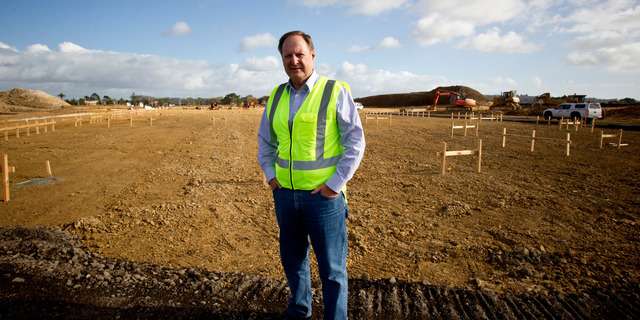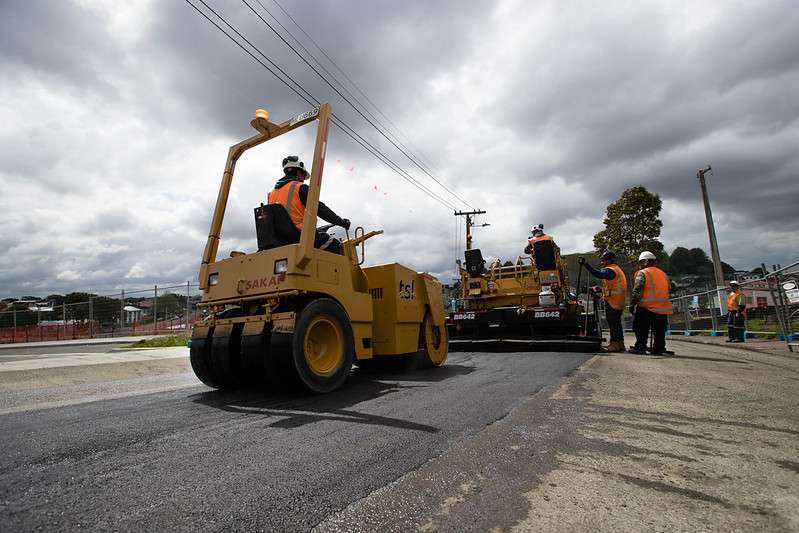Most of us see the new housing being built around Auckland as a large development – a response to a critical shortage. Chris Aiken sees it as way more than that: a transformation, what he calls “a return to our essential New Zealand-ness.”
Aiken works for Kāinga Ora – the new government agency encompassing Housing NZ, its development arm HLC and the KiwiBuild unit. Aiken is Deputy Chief Executive of Kāinga Ora’s Urban Development Delivery, with a remit including preparing land, pipes, roads, reserves and other infrastructure for up to 25,000 new houses in large urban regeneration developments across Auckland, including Hobsonville, Northcote, Mt Roskill, Mangere, Oranga and Tamaki.
The planning, complexity and size of these projects are impressive, the biggest housing change in Auckland since World War II and the huge state house building programmes of the 1960s, increasing our housing density in new ways.
Over 10 years, approximately 5000 state houses will be replaced by about 25,000 homes. Of those, 11,000 will be public housing and 13,000 will be sold to private buyers, through affordable ownership schemes like KiwiBuild and the open market.
Start your property search
Aiken heads up the arm of Kāinga Ora responsible for master planning and readying the land for those 25,000 houses. It involves expenditure of $1 billion over the next five years on house demolition and removal, land remediation and civil engineering preparations.

Chris Aiken, Kāinga Ora. Photo: Dean Purcell.
He is confident about two things: how Kāinga Ora is approaching this enormous task by establishing a programme alliance called Piritahi – and the goal of a renewed Auckland he says will restore a big slice of the city’s soul.
Piritahi is a collective. It has one client - Kāinga Ora. The client and the five alliance companies (design, engineering and construction firms Dempsey Wood, Hick Bros Group, Harrison Grierson, Woods and Tonkin + Taylor) work together (Piritahi means “coming together as one”) as a virtual company.
Aiken says Piritahi is a new way of approaching such complex major infrastructure projects: “What we are doing in Auckland is transformational – so we need a transformational approach. If we’d done this the old way, it would already be a nightmare.”
The old way is the central body (Kāinga Ora, in this case, acting as master planner) contracting designers, engineers and builders to tackle a project. Each would be contracted separately to perform their tasks. But the construction industry has been regularly affected by cross-contract disputes, cost overruns (and responsibility for same) and what Aiken calls “poor outcomes”.

Photo / Supplied.
An alliance model like Piritahi means the companies involved mesh together, identifying and solving problems, sharing the risk and rigorously controlling budgets. They approach complex tasks with a problem-solving, resolution perspective rather than a philosophy of self, retreating into the shelter of a contract when issues arise.
“Piritahi has already proved its worth,” he says, “and it will transform the way the construction industry works now – getting away from the old fixed price contracts and ending up with sub-optimal work. These projects are so big and complex, we couldn’t just throw contracts at it – it needed a far smarter approach than that.”
So that’s the “how”. The other element enthusing Aiken is the “why”. He says the housing projects are not just a response to a critical housing shortage that has seenhouse prices rise to levels excluding some sectors of our society.
These projects are an opportunity to restore something Auckland has lost over the years; they are not just urban restoration but social restoration as well.

Photo / Supplied.
Himself a kid raised in a state house, he says Auckland has perhaps lost a deal of its former sense of community: “I think it’s fair to say that, over the years, Auckland's suburbs have evolved into areas where like people mix only with like - we have lost a lot of the old community richness.
“We have the opportunity to stimulate an integrated community by building a range of housing types that will bring into those areas people of different ages, ethnicities, life styles and life stages.
“I remember my state house area – it was pretty cool. There was private housing on the other side of the street – so we mixed with other kids, other people. That’sthe way New Zealand used to be. What we are trying to achieve with these developments is to restore some of that essential New Zealand-ness.”
The planning of the Auckland projects includes ways to help build that sense of community, with parks, reserves, green areas and community space helping to bring people physically together. However, Aiken says much can be achieved with small measures as well.
One is fewer cul-de-sacs, which cut people off from community facilities, public transport and each other. Common walkways connecting parks with housing often had high fencing – removal of which is designed to help crime rates fall.
“I think in the years to come what we are doing will have a great social effect,” he says. “We are aiming to have increased employment opportunities in these areas and hope to reduce violence and crime rates and, as the sense of community grows, so the demands on taxpayers will lessen.”
Dedicated schemes involving the hiring of local apprentices for companies helping to develop those same areas would also add to community development: “We give preference to construction companies hiring local resource.”
It’s all part of the master plan to build not just houses… but communities.
- This content was supplied by Kāinga Ora








